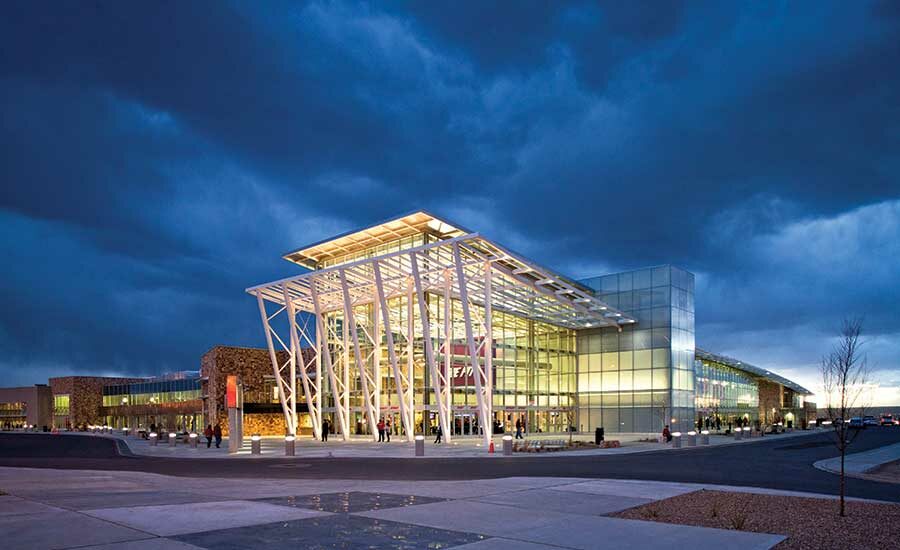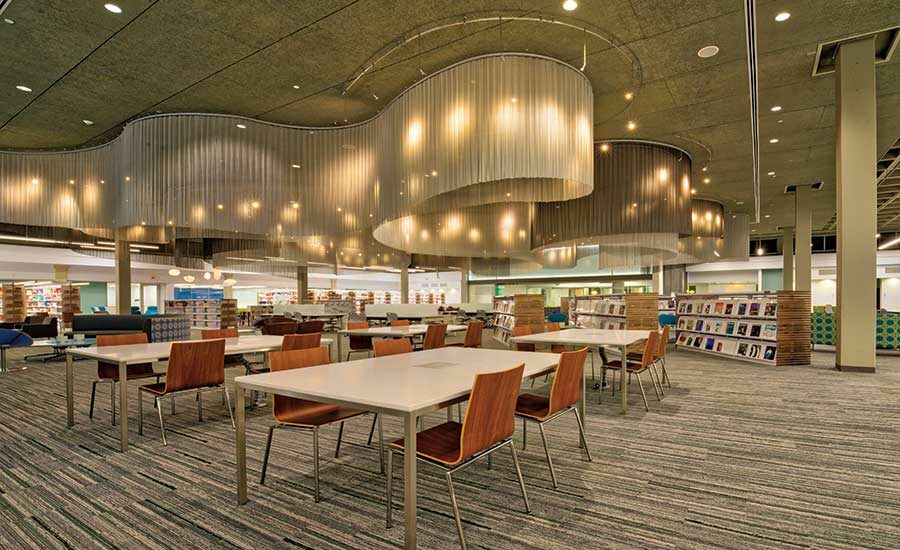Firm Grows by Focusing On High-Tech, Service

Bridgers & Paxton worked on the design for the original Pit, the University of New Mexico basketball arena, as well on recent renovations at the venue.
PHOTO BY FRED COESTER, COURTESY OF BRIDGERS & PAXTON

The firm regularly performs work for the higher education sector, including this library renovation project at Scottsdale Community College in Scottsdale, Ariz.
PHOTO BY ERIC M. GAGNON PHOTOGRAPHY, COURTESY OF BRIDGERS & PAXTON


With its storied history in New Mexico and growing footprint across the Southwest, Bridgers & Paxton has been named ENR Southwest’s Design Firm of the Year due to the firm’s wide range of services and the complexity of the projects it performs. It is part of fabric of the engineering community in New Mexico, born in the 1950s out of needs that arose from the development of the nuclear bomb.
Bridgers & Paxton has grown into one of the largest design firms in the state while also expanding its footprint into Arizona and Colorado. As it grew and prospered, it has developed long-standing relationships with a variety of clients due to its ability to respond quickly to customer needs and perform at a high level in such specialties as technology consulting and health care.
“They are very knowledgable, and they are timely,” says Phil Sena, project manager in the high performance computing division at Los Alamos. “That is very important because supercomputing is always changing, and we have to change on a dime, and they are very responsive to that.”
The company ranked in the top 20 in ENR Southwest’s Top Design Firms list based on 2014 and 2015 revenue. It then rose to the top 15 in on this year’s list with $17.2 million in 2016 revenue, ranking fifth in New Mexico and 28th in Arizona.
The company expanded into electrical engineering in the mid-1990s which has further bolstered its reputation for technological expertise, clients say.
“For a large firm like Bridgers & Paxton, you have to be able to service and have the expertise at every level for each of those disciplines, and they do a great job at that,” says Rick Henrard, planning design and construction director at the University of New Mexico.
The firm is also active on projects in health care, K-8 and higher education, civic buildings, sports facilities, military projects and more.
Bridgers & Paxton is known for its proficiency in planning for energy efficiency. Its founders created the first solar-heated commercial building in 1956.
“Over the years we have diversified our business model, and we’ve benefited from that and our clients have benefited from that,” says John Heck, vice president and principal-in-charge for the Bridgers & Paxton Commercial Electrical Engineering and Technology Consulting business groups in Albuquerque.
These days the firm helps clients reach efficiency goals through energy modeling, capital planning and through the use of master plan energy systems and optimization. More than 80 of the company’s projects are LEED certified.
“These various sustainable design programs have pushed us toward designing better buildings,” says Michael Dexter, president at Bridgers & Paxton.
Jack of All Trades
While Bridgers & Paxton works on projects across the construction spectrum, it has shown an affinity for each sector that it services.
It does this, in part, by relying on specialized teams that service its varied array of clients and key principals of the firm who are actively involved in projects.
“We’re working principals,” says John Montaño, vice president and principal for Bridgers & Paxton’s Phoenix office. “We actually start the project; we see it through. We’re involved in the project during the design process and during construction we’re involved with that, too.”
The company also encourages employees to partake in continuing education in the form of seminars and staying on top of new certifications and code changes. It has internal processes to help employees learn from the successes and challenges of previous jobs.
The quality of the firm’s work across its many specialties often results in repeat business and customer referrals, says Dexter. That includes repeat business from high profile customers like Los Alamos and Sandia, which require extensive technological expertise as they develop facilities to house cutting-edge supercomputers. Both laboratories have been clients of the company for more than half a century.
The company was also an early adopter of REVIT and BIM technologies and has been utilizing them for nearly a decade, says Montaño. Team members use Autodesk University to stay on top of the latest REVIT trends and incorporate other technologies like LIDAR scanning in the design process.
All About the Work
With a proficiency in designing for so many different industries, Bridgers & Paxton has developed a diverse catalog of work ranging from facilities that house supercomputers to community hospital upgrades, to building expansions at the University of New Mexico.
The company recently completed work on upgrades to the Nicholas C. Metropolis Center for Modeling & Simulation at Los Alamos to accommodate Trinity supercomputers. It is now performing preliminary design services on a facility to house Los Alamos’ forthcoming exascale supercomputers. Exascale systems would be 50 times faster than the current fastest supercomputers and be capable of at least one exaflop, or a billion billion calculations per second (1018), according to Los Alamos National Laboratory. The Dept. of Energy expects deployment of exascale systems in mid-2020s.
The primary computing platforms come to Los Alamos every four to five years in addition to many other platforms that come in yearly, which require constant mechanical and electrical infrastructure planning and designing, says Sena.
“[Bridgers & Paxton’s] expertise has helped us a lot in the design of supercomputing support infrastructure,” he says.
On projects like this, Los Alamos can engage the firm from inception through commissioning and start-up.
In addition to its data center work, the company also designs laboratories for Los Alamos and Sandia. One current project involves a test facility for thermal-to-electric power conversion using supercritical CO2 as the working fluid. This poses some significant challenges as it is aggressive, corrosive, high temperature and high pressure.
“This will have a significant increase in efficiency over traditional heat cycles and will be used to generate electricity from solar, so it’s sort of a game-changing technology and we’re happy to be a part of that,” says Dexter.
Bridgers & Paxton also prides itself on performing projects that will positively impact the communities that it works in, says Dexter, such as community hospitals and projects for the Veterans Administration in New Mexico, Arizona and other locales. One such effort is a new hospital for Presbyterian Healthcare Services in Santa Fe, N.M., that will include 230,000 sq ft of hospital space and a 100,000-sq-ft medical office building.
The company is also participating in the phased renovation of Presbyterian Healthcare Services hospital in Albuquerque that will take place over roughly eight years (see p. SW1). The hospital will remain open as it is essentially rebuilt from the inside. Dexter says the cost of renovating the existing hospital is roughly half the cost to construct a new facility on the same site.
“We’re focused on cost containment in health care,” he says. “This is a project that is really focused on being cost effective and it will take this 1960s hospital and make it a modern 2020s hospital.”
The company is also fully engaged in the higher education sector, specifically through projects for the University of New Mexico and Central New Mexico Community College.
The firm has worked with the UNM for more than 60 years—including designing, then years later renovating, The Pit, the school’s basketball arena—and is currently working on multiple projects that range from athletic facilities to work for the health care education, physics and astronomy departments.
“Bridgers & Paxton is a longtime partner, and they’ve actually worked with our physical plant engineers over the years to help establish some of our specifications and our standards for our university facilities,” says Henrard.




